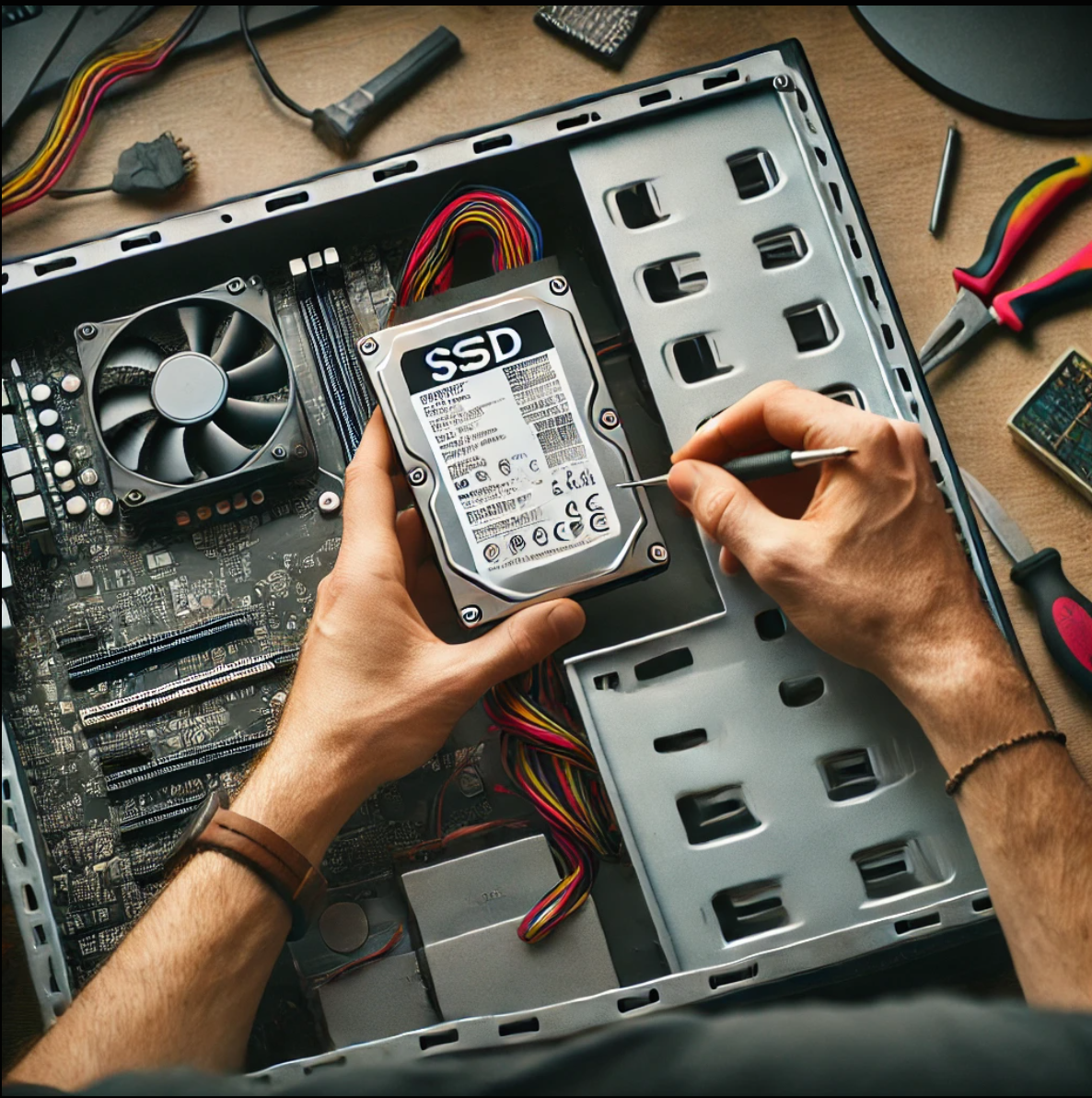What Clients Say?
Here are testimonials from clients..


Introduction:
Upgrading your old PC from an HDD (Hard Disk Drive) to an SSD (Solid State Drive) is one of the most impactful upgrades you can make to boost your computer’s performance. If you're tired of slow boot times, laggy applications, and sluggish file transfers, an SSD could be the solution. In this blog, we’ll guide you through the process of swapping your old HDD for a new SSD and the benefits that come with it.
Why Upgrade from HDD to SSD?
Faster Performance: SSDs are much faster than HDDs. They can read and write data at speeds that are several times quicker, meaning your PC will boot faster, applications will load quicker, and overall performance will be smoother.
Increased Reliability: Unlike HDDs, SSDs have no moving parts, which makes them more durable and less prone to mechanical failure. This is especially important if you’re using a laptop that’s frequently moved around.
Lower Power Consumption: SSDs consume less power, which can help improve the battery life of your laptop.
Quieter Operation: With no spinning disks, SSDs run silently, making them ideal for quiet work environments.
What You’ll Need for the Upgrade:
New SSD: Make sure to select an SSD with sufficient storage space for your needs. For typical users, a 500GB or 1TB SSD is often a good choice.
Screwdrivers: Depending on your PC or laptop model, you may need a small Phillips-head screwdriver to remove the old HDD.
USB to SATA Adapter (Optional): If you plan to clone your existing HDD to the new SSD, you’ll need this adapter.
Cloning Software: Tools like Macrium Reflect or Samsung Data Migration are popular choices for cloning your data.
Step-by-Step Guide:
Backup Your Data: Before starting the upgrade, ensure all your important files are backed up. You can use cloud storage or an external hard drive to make sure you don’t lose any data during the swap.
Prepare Your SSD: If you plan on cloning your current HDD to your new SSD, you’ll need to connect the SSD to your PC via a USB to SATA adapter. You can then use cloning software to transfer the data from your old HDD to the new SSD. Make sure the SSD is properly formatted before cloning.
Turn Off the PC and Unplug It: Power down your PC and disconnect all cables, including the power cord, external devices, and USB peripherals.
Open Your PC Case or Laptop: Depending on whether you have a desktop or laptop, open the case or remove the back panel. In desktops, the HDD will typically be in a dedicated drive bay, while in laptops, it may be located under a panel or the battery.
Remove the Old HDD: Unscrew and carefully remove the HDD from its slot. If it’s a laptop, you may need to disconnect the data and power cables attached to it.
Install the New SSD: Place the new SSD in the same slot where the old HDD was. Secure it with screws, and reconnect any cables that were attached to the old HDD.
Boot Up and Test: Power on your PC and check if the system detects the new SSD. If you cloned your data, your system should boot from the SSD without any additional steps. If you’re installing a fresh OS, you may need to reinstall your operating system and programs on the SSD.
What’s Next?
After upgrading to an SSD, you’ll immediately notice faster speeds and improved performance. But there’s more you can do to optimize your SSD:
Enable TRIM: Ensure that TRIM is enabled on your SSD to help manage unused data blocks efficiently.
Update Drivers and Firmware: Check for any available updates for your SSD to ensure maximum performance.
Reinstall OS (Optional): If you didn’t clone your old HDD and are starting fresh, now is the time to install your operating system on the new SSD for a clean, optimized experience.
Conclusion:
Upgrading to an SSD is one of the most cost-effective ways to breathe new life into an old PC or laptop. The improvement in speed, reliability, and overall performance will make your system feel like new again. With just a few steps, you can enjoy faster boot times, quicker load times for apps, and an overall smoother experience.
Whether you’re upgrading your own machine or helping others do the same, this is a simple but impactful upgrade worth considering.
Here are testimonials from clients..
Get answers and advice from people you want it from.